Type “Iveagh Markets” into Google Maps, and red words appear: Permanently closed. Blunt and apparently definite; but maybe inaccurate. The market awaits its fate as a seemingly interminable legal row now moves slowly through High Court mediation: nearly two years in, the mediation was adjourned again last Monday until November 28th.
The smirking face on the decorative keystone around the corner from the main entrance to the Iveagh Markets, on Francis Street in Dublin’s Liberties, can hardly be laughing much these days; there are many losers in this sorry tale.
Supposedly representing “a Jew” (market keystones represent “trading nations of the world”), it’s also said to be a likeness of Edward Cecil Guinness, the first Earl of Iveagh, who built the market and gifted it in 1906 to the people of Dublin.
This is a story with many elements. Heritage, cultural significance and outstanding architecture; embedded social history of the city, its poverty and Guinness’s philanthropy; allegations of official neglect and mishandling; legal rows about ownership and responsibility; millionaires and aristocracy, tensions between public good and private profit; hope for a future for Dublin’s gracious indoor market.
READ MORE
It’s a hard saga to follow; attempting to make sense of the path that’s led here, a quarter of a century after the market closed, with the empty building visibly deteriorating while its ownership is disputed.
The decay is one thing, but the condition of the building has not been helped by the work done, in the hands of people with no feeling for a quality building like that
Over 20 years after hotelier Martin Keane agreed a long-term lease with Dublin Corporation to develop Iveagh Markets commercially, having failed to do so despite two planning permissions, Dublin City Council (DCC) ruled a third application invalid in 2020 and sought to repossess. Keane challenged in the High Court.
Then Edward Guinness, fourth Earl of Iveagh, invoked a reverter clause from the 1906 deed entrusting the property to the council, that it would revert to Guinness if it ceased to be used as a market. Keane and three of his companies then sued Guinness, claiming unlawful forcible entry and seeking orders for possession. The deadlocked dispute over title has been in High Court mediation since early 2021, between DCC, Keane and Guinness, as the building’s perilous state worsens.
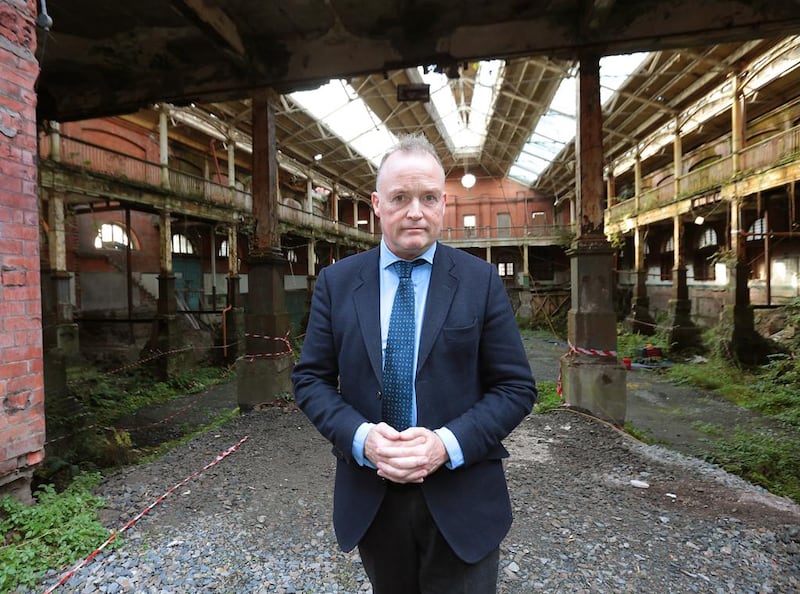
The taxi driver who brings me to the Markets says “Ah, the Iveagh. That was a great place. I got my first communion outfit there, and my confirmation suit. It’s sad to see it gone.”
Inside it’s majestic, but also sad. You can feel its ghosts. After 25 years of vacancy, with claims of neglect and damage, nature has been reclaiming the Iveagh.
The vast expanse of the dry market is still glorious, with shades of Miss Havisham’s neglected home in Great Expectations. The floor has been dug out and there’s a pit several metres deep. In it are ponds of water and even luxuriant ferns. The hall’s rusting pillars still hold up the now unstable balcony where once furniture was sold. Many panes of the glass roof are broken or missing, and the wood is visibly rotting; years of water ingress and storms have done serious damage.
One corner appears about to fall in. It’s been raining on and off for weeks, and rain comes through the roof as we walk around. The floor of the wet market has been rough-filled. Brick under the windows seem to have been partially removed. The linking archway between the dry and wet markets looks like it was ripped out. Many original white wall-tiles are damaged or missing.
Outside in the yard, laundry buildings and a tall brick chimney have been long ago demolished to make way for a once-proposed hotel; now there’s a gaping green marshy pit. Lumps of granite are stacked loosely outside while inside the wet market are several pallets of old red bricks; these appear to be the remains of the demolished laundry.
Hotelier Martin Keane, whose properties include what is reputedly the most profitable pub in Ireland - Temple Bar’s Oliver St John Gogarty - appears determined to include a hotel in his development plans for the markets
Noel Fleming of Liberties Cultural Association and David Delaney, of generations of stallholders, are here too. When it closed, the market only needed minor work, they observe.
It’s perilous now, a monument to dereliction.
The poor state of the structure will add millions to any future refurbishment. By 2018, a dilapidation survey estimated essential repairs at €13 million-plus. Later estimates produced a figure of more than €23 million. Meantime: further deterioration, storm damage and construction inflation.
And yet, it is still solid and strong. Those graceful features, its fine redbrick and granite, the elegant pillars, are still there. Squint and you can imagine it alive and pulsating. A market to rival others, from Cork’s English Market or St George’s in Belfast, to further afield: Lisbon’s Time Out or Mercato Centrale in Florence.
Across the road from the back of the Iveagh, on Lamb’s Alley, is the substantial former Mother Redcap’s Tavern, which Keane owns, also vacant for decades. His plans involved linking the two in a larger hotel and retail complex.
Among locals and beyond, there’s huge interest and concern for the market, upset and anger about its alleged neglect and mismanagement, and fears yet another winter will do irreparable damage. Last month’s Open House walking tour, The Guinness Legacy in the Liberties, got permission for limited access: relays of small groups from over 170 people on the tour stood at the main doors to look inside for a few minutes.
There are three legs to the stool of the mediation, and the one that’s missing is the community
The Liberties Cultural Association is anxious remedial works to stabilise the Iveagh Markets for future generations begin as soon as possible.
Without exception, locals I talk to say they want the building protected and to be given back to the people. “We don’t want another hotel in the Iveagh”, several say. One local following the saga, who does not want to be identified, says all parties bear blame for letting this happen under their watch.
Local councillors have voted in favour of the market being retained in public ownership. Campaign group Reclaim the Iveagh Markets says not doing so runs counterproductive to local democracy. Fergal Butler and Andy O’Connell of Reclaim are enthusiastic about the potential of a restored, publicly-owned market for rejuvenating the area. “The local people are not being listened to,” they say.
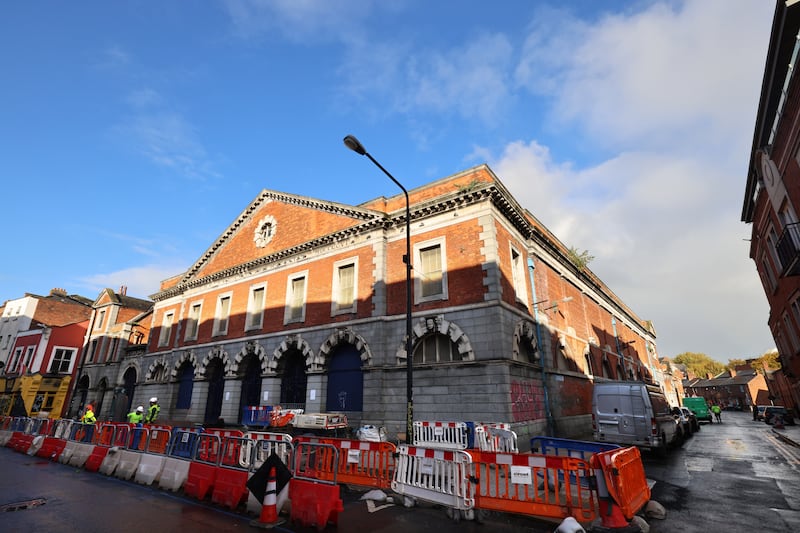
“There are three legs to the stool of the mediation, and the one that’s missing is the community. Our campaign doesn’t bear any ill-will towards Mr Keane but in fairness, there’s a consistent pattern of failure to redevelop and a lack of maintenance while he’s leased the building. We would strongly resist him having sole control.”
They want the Iveagh under DCC management, with community representatives “to ensure the Markets serve the community and not one individual developer, partly responsible for its current state”.
Anyone who thinks the council can just take the market doesn’t know what they are talking about
It’s hard to gauge what DCC wants, other than, presumably, an amicable solution. It appears something in its 1997 agreement with Keane is at the root of the present ownership dispute. It could also be faulted on its management of the sorry mess over the past quarter of a century, letting it drag on while the vacant building decayed.
There is much to ask him, but DCC’s assistant chief executive for planning and property development Richard Shakespeare says it would be inappropriate to comment at all, while mediation is ongoing.
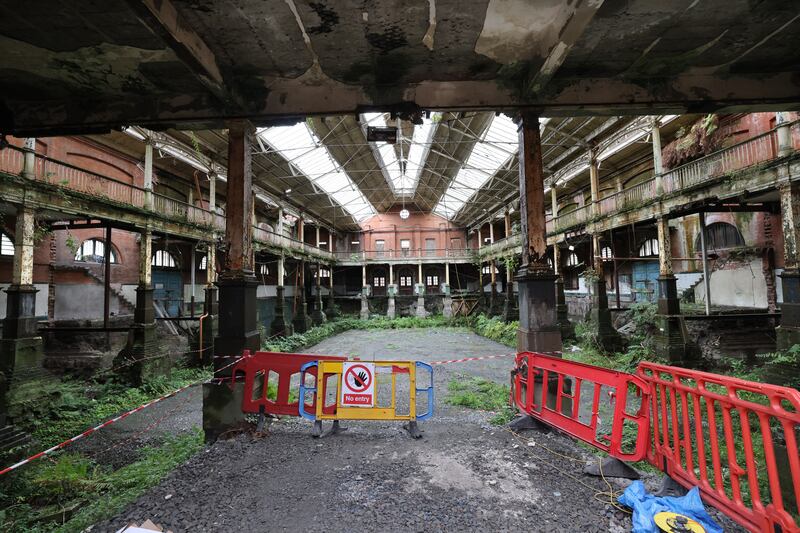
Mr Keane, too, tells me his lawyer has warned him against talking about the mediation. “I have to take his advice because we have actions pending on the other two people in the mediation. A lot of action. [For] if the mediation doesn’t work. And we’ve also lodged in court some proceedings against them [DCC and Guinness]. So on that ground I can’t really say anything. I’d love to,” he laughs, agreeing he has a lot to get off his chest. “I have a heap of correspondence.”
All the same, he chats around the subject. Some of it seems to be in riddles but it is an insight into his perspective.
Keane, whose properties include what is reputedly the most profitable pub in Ireland - Temple Bar’s Oliver St John Gogarty - appears determined to include a hotel in his development plans for the markets. Speaking to Olivia Kelly here in 2017, he said: “Anyone who thinks the council can just take the market doesn’t know what they are talking about. I would be seeking my costs, including lost opportunity costs, and I would enter a lis pendens in the courts which effectively sterilises the property. This is an ‘over my dead body’ situation.”
[ Dublin’s Iveagh Market ‘repossessed’ by member of Guinness familyOpens in new window ]
Asked now why he did not develop it over the many years he had planning permission, he says when he bought the 500-year lease 25 years ago, the title “wasn’t perfect, and this went on for years, and we got a rectification of it. The correction wasn’t strong enough and it wasn’t bankable. It just didn’t stand up”. Then, “we were teeing up to do it”, although there was still a problem with title.
“I was to get an indemnity off DCC. That never came. Then the financial crash, the banks came tumbling down and that’s what happened to that.” Planning permissions were extended during the crash, “but there wasn’t enough time left in the extension” to sort the title and complete the job. Did he have the money in place? “At that stage I would’ve had a lot of money, because things worked out very well for me. I was probably debt-free.”
There is a great opportunity with mediation but if the principals won’t even attend the mediation, how do you drag something forward?
He talks about his various plans for the market. “Back in the day, there was an entertainment centre under the hotel, bits and bobs, 140 bedrooms, food and beverage. The market was to be mainly Irish goods and food. An aparthotel and another hotel on Mother Redcaps, interconnecting with a street market on Lamb’s Alley.” Asked if he has the funds to do it now, he says he has properties he could sell, and could go to financial institutions, “that’s what they’re there for”.
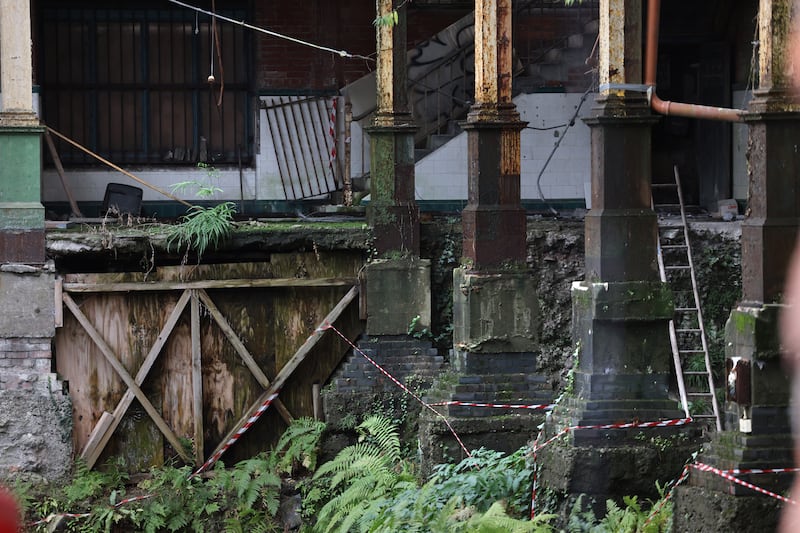
The main point he makes is about title. “We’re of the opinion, of course you probably think I would say this, but we definitely have the will to resolve it, right, and we definitely have the whereabouts. There was always a problem with the title and we have the roadmap to sort the title out. And the other sides haven’t. We know exactly what needs to be done, but that would depend on the co-operation of other people, and we assume that would be a given.” He says “my conveyancing people can solve this problem. They have a methodology on how to do it and what’s needed.” To do what? “I can’t tell you!”
“The other parties weren’t prepared to undertake conveyancing to do a roadmap on it, and we took that in hand and we have it completed.”
[ Judge urges mediation in Iveagh Market ownership disputeOpens in new window ]
Several people observe he seems obsessed with the market. Why is he so keen? He talks about how as a small boy his father took him to get fish on Fridays. “It would be a fantastic thing for the people of Dublin, for the city and for the whole artisan, arts and crafts and for the food people. A great place to have performances there, all sorts, Irish dance, culture.”
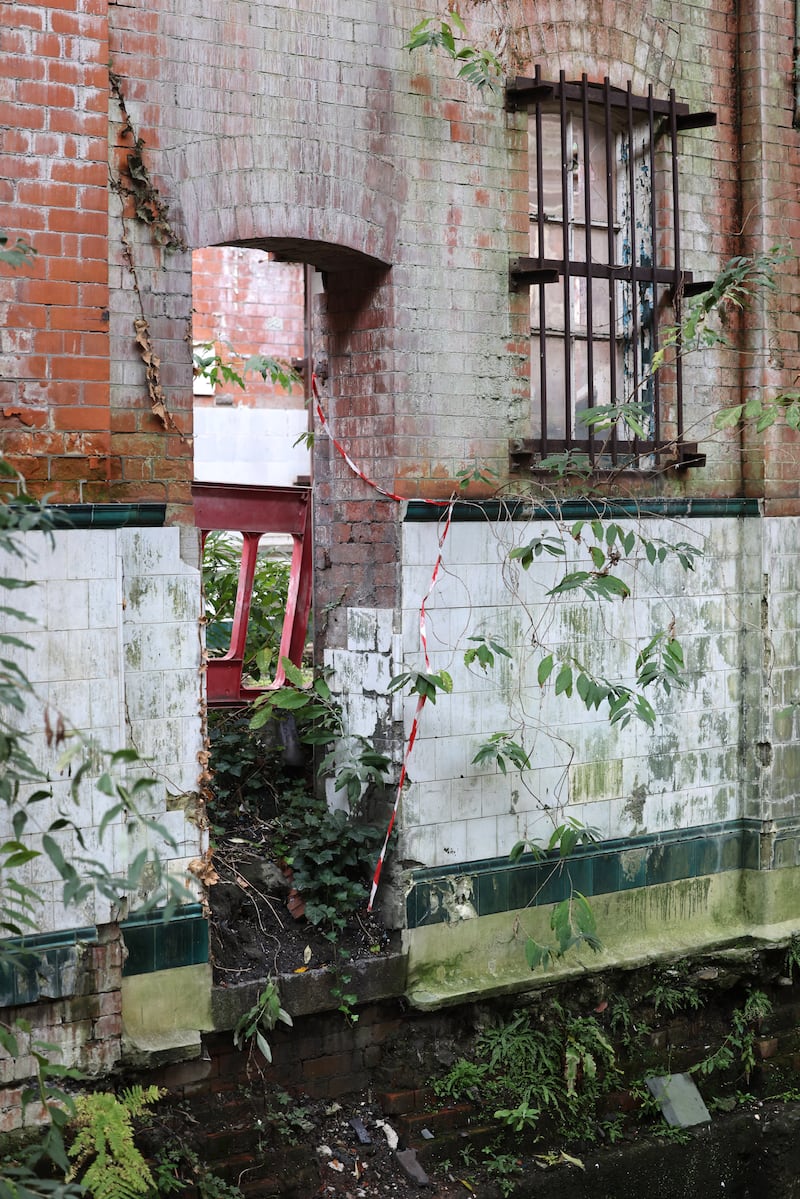
He talks about Covent Garden in London, “they have a sort of a rundown version of it, with street theatre, jugglers. My idea was having it inside in the whole complex, performances all during the day, probably everything from Phil Coulter backwards, upwards and downwards. A hub for young musicians from all over the country and poets and whatever would like to be there. And having it properly managed and run.” And a hotel as well? “Absolutely.”
The local community has been let down by the closure of a much-valued community resource, in the close-knit Liberties.
I say it is a crying shame, the state the market is in now. He agrees, “it would break your heart. I’ve put millions into this project. The archaeology dig went on for years, legal fees, you just wouldn’t believe what went into it.”
The building is clearly in a poor state. But, he counters: “Anything that was done was with planning permission to take it to the next level.”
I venture, because of the fight over it, and all the legal action, the market is what’s suffering.
“You’re on thin ice there.”
He says “there is a great opportunity with mediation but if the principals won’t even attend the mediation, how do you drag something forward? The main person is not there. I’ve asked Ed Iveagh to meet me, I’m not unreasonable, several times. I’m not running away from anything. I’d meet face-to-face. At the end of the day this is what’s going to have to be done.”
So many people remember the operation of the markets with tremendous affection, and I would cherish the rekindling of such strong sentiments following successful renovation
Edward Guinness – Ned to his friends – has been represented or personally present at mediation, most recently on November 4th, a few days after I spoke to Mr Keane. Born in Co Kildare, he grew up in Dublin and lives at Elveden Hall, Suffolk, and runs a 22,000-acre estate. Another wealthy man, he does not have anything financial to gain from involvement in all this. But he has stuck with it, indicating he is motivated by a desire to do right by the wishes of his forebear Edward Cecil Guinness, and wants the Iveagh as a market again, restored for the people’s benefit.
No one seems clear on who owns the market. It’s “hugely complex and the subject of legal discussion”, according to Guinness, who is also cautious about talking with mediation ongoing, and does so through an intermediary.
While Keane has a long lease and has altered the site, and DCC has some responsibility, when The Irish Times wanted to see the market and take photographs, it was Guinness who gave the OK; he is the keyholder and is paying for security.
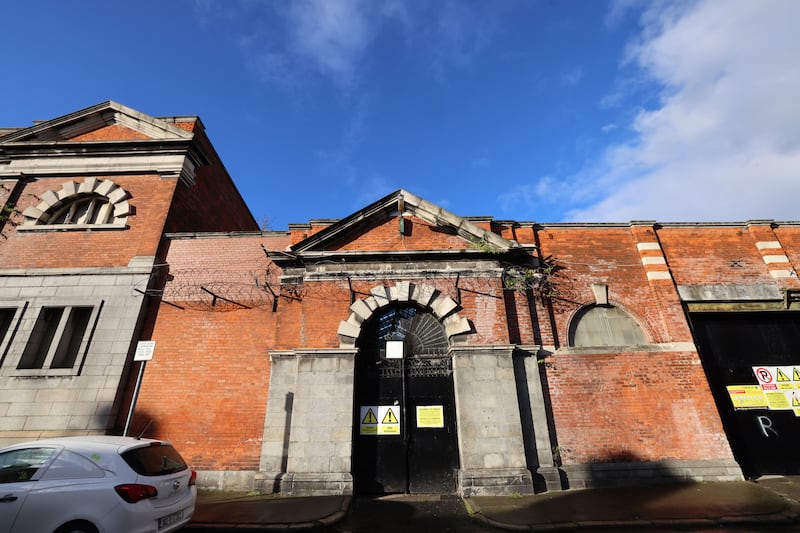
On the Iveagh Market being vacant and damaged, over 25 years, Guinness says: “The local community has been let down by the closure of a much-valued community resource, in the close-knit Liberties. This is all that I can say. There’s no point in speculating as to why, but only to promote the phoenix rising from the ashes, in the restoration of the beautiful old structures, and the repurposing of a destination fit for the community and the entire city of Dublin, in 2022, and for decades to come.”
Asked about his preferred option, he says “it’s up to the wishes of the people of the Liberties, and their civic leaders, to decide upon the optimal use of the site. I am minded to uphold the wishes of my great-great-grandfather, as he created and gifted the facility to the people of Dublin. It is his tremendous generosity which led to the formation of the markets, which gave rise to many decades of the site’s much-cherished civic purposefulness. So many people remember the operation of the markets with tremendous affection, and I would cherish the rekindling of such strong sentiments following successful renovation, and reopening to any valid combination of uses to be determined not by me, but by popular sentiments.”
[ Una Mullally: Dublin’s Victorian markets left to rot while hotels shoot upOpens in new window ]
The Iveagh Markets are a monument to something for sure. To Guinness’s socially responsible role in Dublin’s past. To graceful Edwardian architecture and quality construction, whose resilience has been sorely tested for decades. To generations of traders, and customers who fed and clothed their families there. To the risks of handing public good over to the vagaries of private interests. To the city’s bungled management of a gracious gift, where seemingly poor decisions of the past may colour the future.
Iveagh Markets: A TIMELINE
1897: Continuing the Iveagh Trust’s philanthropy providing housing and amenities for the “labouring poor”, brewer Edward Cecil Guinness decides to build an indoor market as a gift to the people of Dublin, to house traders on Francis St and Patrick St.
1906: The Iveagh Markets, designed by Fredrick G Hicks, built to a very high standard, opens, comprising two linked halls: a dry market selling clothes and furniture, and a wet market (entrances on Lamb’s Alley) for fish, meat, fruit and vegetables. There’s also a laundry complex for disinfecting clothes, a market superintendent’s house, and laundry attendant’s house. It’s given to Dublin Corporation on a 99-year lease, to be “held and maintained” as a market, with no change in use without the trust’s permission. A vibrant, thriving market for decades, “it was unofficial social services in its day,” says Andy O’Connell of Reclaim the Iveagh Markets: income, cheap goods and a place to wash before indoor plumbing.
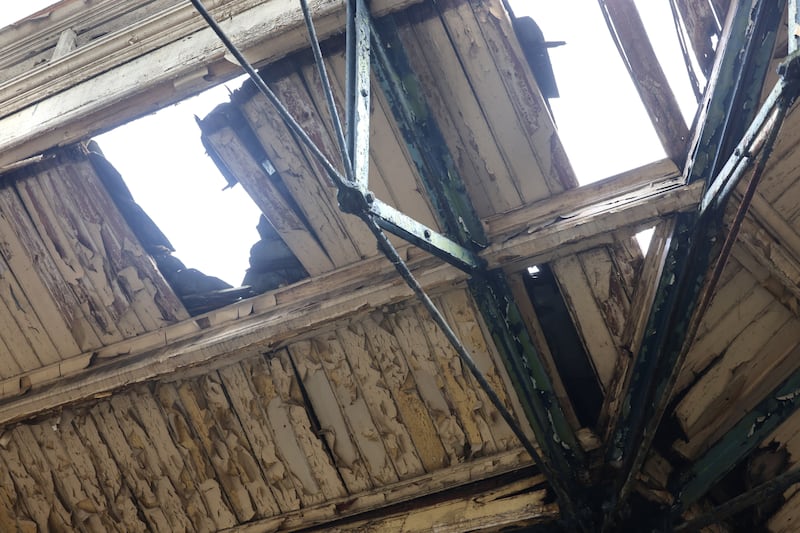
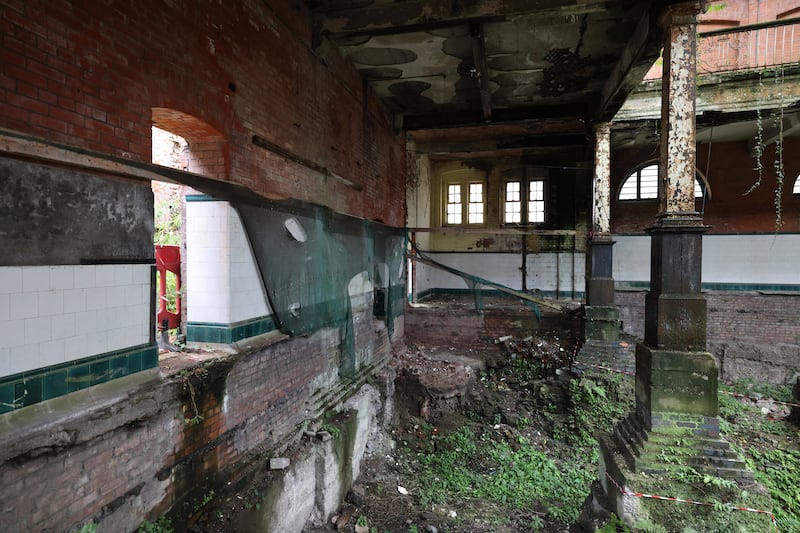
1993: Dublin City Council plans restoration “to its original splendour”; remedial works estimate of €1.25m later deemed inadequate. Former traders say market was run down before deciding to close.
1996: DCC seeks a private developer to regenerate the public market.
1997: The Iveagh Markets close. Martin Keane’s MK/Slattery Ltd secures the tender. The deal: title to transfer to him once redevelopment is complete; he carries out refurbishment, gets a 500-year lease for annual rent of £100, with a small percentage of profits (6 per cent, rising to 10 per cent) going to the Corporation. Crucially, he can also build a hotel on part of the site. Keane says there were “two chunks” to the lease (the second following an attempt to correct issues in the title), and he paid roughly £800,000 for each chunk. (He’s not certain; “the files on this is massive”).
2001: Sé Merry Doyle’s documentary film Alive Alive O – A Requiem for Dublin chronicles street traders’ culture.
2007: Keane applies for planning permission, which is granted. It expires.
2012: Keane gets further planning permission, to redevelop the market and the former music venue Mother Redcaps behind it, as hotel, restaurant and food market. It remains undeveloped.
2017: Reclaim the Iveagh Markets starts community campaign to bring the market back into public use.
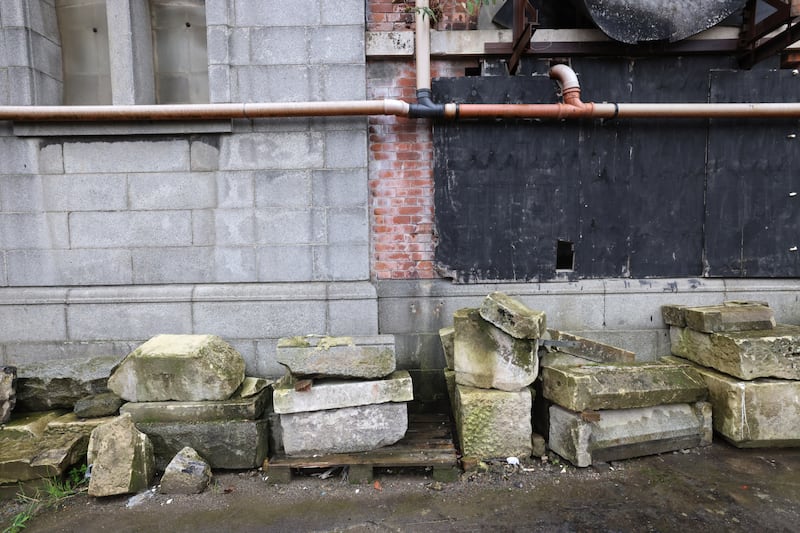
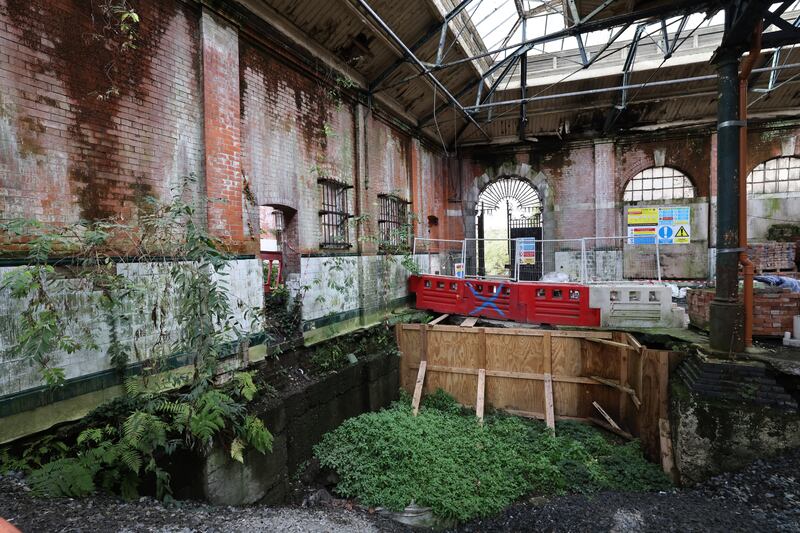
DCC passes motion by Cllr Tina McVeigh PBP in September, calling for council to take back control of the markets as the lease has lapsed for the third time, without any development. Keane calls it “an ‘over my dead body’ situation”.
2018: January 31st set for Keane to deliver possession of the property to the council. He does not do so but agrees to allow DCC survey of building condition.
Howley Hayes Architects carry out extensive dilapidation survey for DCC in summer, to assess damage and necessary repairs. “Currently the building is unsafe and in an advanced state of dereliction, due to a combination of serious neglect and several damaging interventions.” The survey also outlines the market’s archaeological, aesthetic, historical, scientific, and social significance. Essential repairs and stabilisation works estimated at €13million (excluding professional fees and other costs). It was previously estimated entire project would cost c.€30m, funding that DCC says had not been provided for in its capital programme.
2019: An Taisce identifies Iveagh Markets as one of Ireland’s Top 10 Most-at-Risk Buildings, observing: “This building has been vacant for a number of years and does not appear to be maintained. Most of the external fabric remains, but there are obvious signs of deterioration, particularly water penetration, slipped slates and vegetation growth. There is no immediate danger of collapse but the condition is such that unless urgent remedial works are carried out the building will sharply deteriorate.”
Local community contributes to oral archive of memories and market-life, led by Dr Kelly Fitzgerald, funded by DCC and curated by UCD School of Irish, Celtic Studies and Folklore.
On December 23rd Keane lodges a new planning application for redevelopment.
2020: Planning application declared invalid in January as DCC not satisfied Keane has appropriate funding for the project, and application was lodged “without the council’s consent as landowner”. After years of stalled redevelopment, DCC announce it’s terminating communication with Keane and taking steps to repossess the property from him.
In December solicitor Paul Smithwick, acting for Lord Iveagh, invokes a reversion clause in the original deed of conveyance, that it would revert to the Guinness family if it ceased to be used as a market. Guinness repossesses the building, planning to develop it as a market “in a manner conforming with the wishes of the First Earl”. The move is welcomed by many; “Lord Iveagh Steps in to Rescue Iveagh Market” says libertiesdublin.ie headline.
2021: In January Martin Keane brings proceedings against DCC over planning refusal and also sues Edward Guinness claiming unlawful forcible re-entry of the market. Guinness defends the claim, says he’s the lawful owner, the Iveagh Market is a protected structure and national monument and was damaged and filled with waste while in Keane’s care for the past quarter of a century. Keane rejects these assertions by Guinness, arguing the claim of neglect was at variance with what actually occurred, adding that he has incurred substantial costs in an archaeological investigation. High Court judge urges the three parties in the ownership dispute to consider mediation.
Disputes over who is to pay for security for the market. (Guinness has since taken on the cost.)
Market’s roof badly damaged by Storm Barra in December.
2022: At January’s council meeting, on foot of rumours that Keane had got possession of the building back, four local councillors table an emergency motion asking council managers for a full report. Cllr Tina MacVeigh asks if there’s been a “shady backroom deal”. “If the rumours are true, ownership of the historic Iveagh Markets has been granted to a private developer, but not just any private developer. This is the very person that has sat on the Iveagh Markets for the last 20 years.” Locals feel betrayed, she says. For the council, Richard Shakespeare confirms no agreement has been reached, and mediation is ongoing.
In February, after giving four hours of mediation evidence from his bedroom, terminally-ill Paul Smithwick says his dying wish is that the parties agree a deal; “I would love if the plaintive call of a lame duck going out would get a deal done.”
The mediation continues, with adjournments, the latest being to November 28th, as another winter threatens the fabric of the still vacant Iveagh Markets.



















